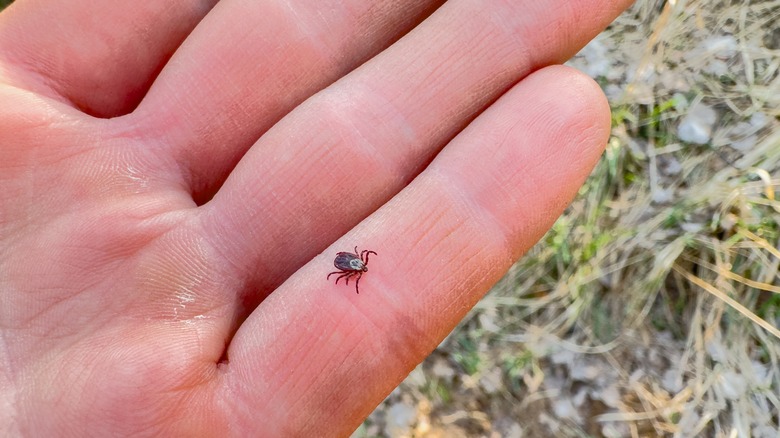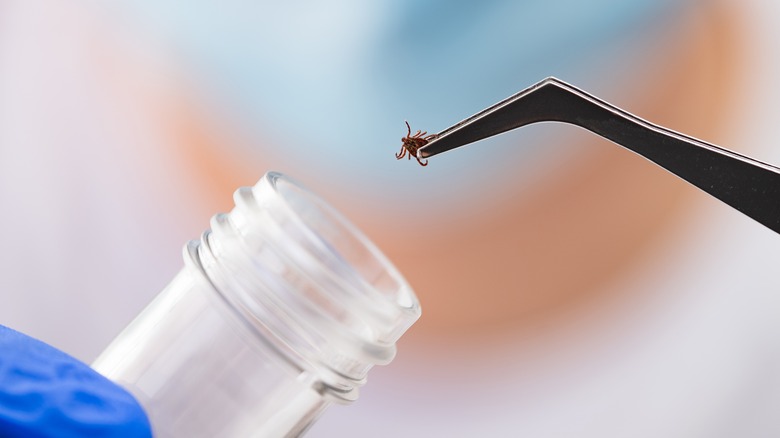Found A Tick In Your Home Or Garden? Here's The One Thing You Definitely Shouldn't Do
Finding a tick in your home or garden can send a shiver down your spine, and your first instinct might be to squash it as fast as possible. But here's one thing you should absolutely avoid: never squish ticks with your bare hands. While it might seem like the quickest way to get rid of them, crushing a tick can expose you to dangerous diseases like Lyme disease, anaplasmosis, and babesiosis. When you squish a tick that's attached to you, all the pathogens it carries can seep out and potentially enter your body through the bite. Even if a tick hasn't bitten you yet, handling it without proper protection is risky.
Ticks are more prevalent during the warmer months, including in late spring and summer, when you're spending more time outdoors gardening, hiking, or playing with pets in the yard. Instead of relying on brute force, it's important to use the right tools and techniques to remove and dispose of ticks safely. You'll need a pair of fine tweezers, a sealable plastic bag or container, and isopropyl alcohol. By taking a few extra seconds to prepare for ticks the correct way, you can protect yourself and your family from serious illnesses and keep your garden and home a safer place to enjoy all summer long.
How to remove ticks properly with tweezers
If you find a tick, resist the urge to panic. Using fine-tipped tweezers, grasp the tick as close to your skin as possible and pull upward with steady, even pressure. Avoid twisting or jerking since this can leave parts embedded in your skin. Once removed, place the tick in a sealable plastic bag with isopropyl alcohol to kill it.
After disposal, clean the bite area and your hands thoroughly with soap and water or alcohol. Not all ticks carry diseases, so it's important to know the ones to look out for. For example, blacklegged ticks, or deer ticks, are known for transmitting Lyme disease and babesiosis. This kind of tick has dark black legs and a black and orangeish body. If you're unsure of what kind of tick you have, consider labeling the bag with the date in case symptoms appear later. Your doctor may ask for the tick for identification.
Beyond safe removal, you can stop ticks from taking over your lawn by creating a barrier of gravel or wood chips between your lawn and wooded areas. If you have pets, check them regularly and consider veterinarian-approved tick preventatives. You can also treat clothing and gear with insect repellent. To customize your approach further, plant some of the 18 plants that keep ticks out of the yard, such as catnip, rosemary, and lemongrass. These natural options not only deter ticks but also add beauty and fragrance to your space. By taking these thoughtful steps, you can enjoy your yard with confidence and avoid the serious health risks these tiny invaders bring.

